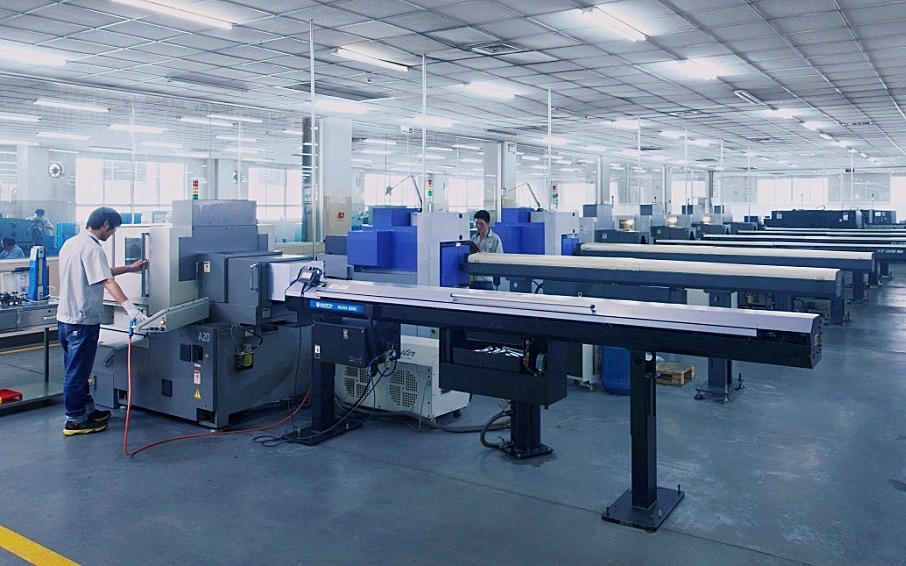An industrial CNC turning service is indispensable to large scale manufacturing, because of the capability it provides to machine parts with excellent high precision machining guaranteed for heavy duty applications. Unlike other CNC turning, Industrial Grade services are expert in producing workpieces of massive size, extremely hard material and on continuous production. These services employ CNC lathes with CNC machines that are designed to hold up in heavy duty operating conditions and can work with micron level precision in the thousands of parts.
Turning on CNC is distinguished by its scale and capability from standard and industrial. For example, industrial turning is performed with larger machines, featuring much more efficient cooling systems, and larger work envelopes (you can find something that will turn a part above 3 meters long). These services are employed by industries such as oil & gas for drilling components and the automotive industry for high volume transmission parts production. Heavy machinery manufacturers rely on industrial CNC turning of their critical components such as hydraulic cylinders and gear shafts that will serve them for many years of harsh use.
How Industrial CNC Turning Services Work
The bases of the industrial CNC turning centers measure up to the power and precision for which they were engineered: Massive welded cast iron plates, providing lots of damping of vibration, which stands by them during the heaviest cutting operations. High torque spindles with the ability to keep constant surface speeds are utilized by these machines when machining large diameter workpieces. 20 + station automatic tool changers and programmable tailstocks support lengthy components.
I have begun with industrial turning process of strategy planning. Engineers analyze how the part geometry will work best with 3 jaw standard chucks, hydraulic collets for high speed work or custom fixtures for the odd shape. Oversized parts find their places in the machines with gap-bed designs that can accommodate dimension of extra diameter clearance. In this phase, heat management strategies are considered alongside the cutting path as industrial turning is commonly known for high removal rates leading to large heat generation.
Types of Industrial CNC Turning Operations
High-Volume Production Turning
High volume turning are industrial facilities employing multiple CNC lathes in coordinated production cells. Such setups typically include robotic loading/unloading systems and conveyor networks so as to build continuous production lines. With very little human intervention, a single cell could produce tens of thousands of parts per month. For instance, automotive piston manufacturers depend on these systems to maintain the tight tolerances needed for engine components against aggressive production schedules.
Large-Diameter Turning
Massive components such as turbine rotors, marine propeller shafts and mining equipment parts are handled by specialized turning centers. They have large spindle bores (often over 300mm and significant rigidity to avoid deflection when machining such large material volumes. The chuck designs distribute clamping forces evenly to prevent misshaping large, thin walled work pieces during machining.
Heavy-Duty Turning
For their part, industrial turning services specially approach when they are to machine high strength materials such as Inconel 718 or hardened tool steels. The extreme cutting force and heat that are generated are combated using machines with ultra-rigid constructions and high pressure coolant systems. Advanced coatings within our tooling (AlTiN or diamond-like carbon, for example) allow the tooling to maintain longevity when being used against abrasive material. Some of these operations use slower speeds (faster feedrates) but deeper cuts in order to achieve high metal removal rates without sacrificing tool integrity.
Multi-Axis Industrial Turning
Additional axes of motion are becoming routinely included in modern industrial turning centers. Y axis capability permits milling operations off centre, and B axis capability permits complex contour. These are the most advanced machines that marry turning and milling in a single platform, complete with automatic head changers, and swap between turning and milling configurations as required. For something like valve bodies with precision bores, threaded ports and flange faces, all machined to the same location in space this is priceless.
Materials Used in Industrial CNC Turning
Industrial CNC turning service employ a vast array of materials, each of which is chosen for its suitability in the most demanding environments. One of the most common types of metal that are used in industrial applications is stainless steel alloys of 304 and 316 since they provide corrosion resistance as well as mechanical properties. 4140 and 4340 chromium molybdenum steels offer high strength but are very hard and will provide good wear resistance and are used in component parts of heavy machinery where a high strength will be of benefit.
Key Applications of Industrial CNC Turning
The automotive industry uses wide industrial CNC turning for critical drivetrain components. In the transmission shafts, splines and bearing surfaces are required to hold an exacting tolerance throughout constant torque fluctuation. Industrial turning offers the perfectly concentrated mounting surfaces and axle bores of wheel hubs. Turning operations are becoming more and more important in modern electric vehicles due to the fact that they are heavily relied on turning components to be used for cooling systems of batteries and motor housings which require thermal management.
Future Trends in Industrial CNC Turning
The introduction of artificial intelligence into industrial CNC turning is changing how we look at traditional machining. The AI powered adaptive control system can now analyze the cutting forces, vibration pattern and acoustic emissions in real time over the entire cutting zone to plan feed rates and spindle speed dynamically. They can detect tool wear before it affects part quality and do so by automatically adjusting the offset or initiating the tool change as necessary. Machine learning algorithms are being trained on big data sets of machining parameters in order to predict best machining strategies for new materials and geometries in order to afford cutting.
Conclusion: Optimizing Production with Industrial CNC Turning
The industrial CNC turning services has emerged as an indispensable manufacturing solution to many of the industries in need of precision at scale. This technology combines heavy duty capability and microscopic capability to produce components meeting the most demanding performance specifications. In mission-critical applications from large energy sector valves to complex aerospace actuators, geometric precision and material integrity are supplied by industrial turning.
The decision to partner with an industrial CNC turning provider should be based on both current requirements and future growth potential. Leading manufacturers recognize that these services offer more than just part production—they provide complete manufacturing solutions that enhance product performance while optimizing production economics. As industrial turning technology continues advancing with smarter, more connected systems, early adopters stand to gain significant competitive advantages in their markets.

















